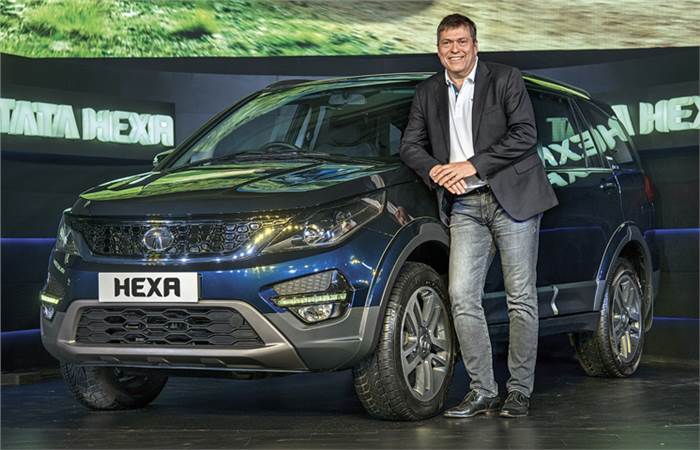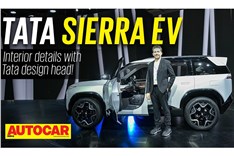A few months ago you were gung-ho about the Tamo sub-brand, restructuring the organisation and the VW-Skoda alliance. There seems to be pull back on all these initiatives. What happened?
There were two key elements to our transformation strategy at that time. First one was Tamo, which was our way of dealing with the disruptions in the market such as new technologies, business models and partnerships. The second one was organisational efficiency, where we launched a major restructuring initiative by moving from 14 levels to five, and bringing more accountability and agility to the organisation. Our focus is now on the turnaround programme, which is a subset of our transformation strategy. The plan is to focus and raise the bar of the domestic CV business, which is considered to be the backbone of Tata Motors. We have four angles of attack, i.e., top-line improvement, agile cost management, customer centricity and structural improvement.
The sense one gets is that the passenger vehicle (PV) business is not the top priority, and the new chairman N Chandrasekaran, who isn’t really a car guy, wants more focus on the bread-and-butter CV business. Is this the case?
It is not as black and white as you think. While we are refocusing on the domestic CV business as the financial and operational backbone of Tata Motors, we have not changed our PV strategy. So, as planned, we will move to a two-platform strategy. First platform will accommodate a five- and seven-seater SUV with an expected market launch in FY 2018-19. Second is our Advanced Modular Platform (AMP), on which the first vehicle will be launched in mid-2019.
What is the future of Tamo and Racemo? We hear the Rs 250 crore earmarked for Tamo has been deployed in reviving the CV business.
Our devastating financial condition for FY 2016-17 and an extremely difficult start in the first quarter of FY 2017-18 meant that turnaround was the need of the hour. So we put our plans back on the bench. As part of this discussion, we decided to put Racemo into the fridge because it wasn’t appropriate in our stretched financial condition. We still believe Racemo has a legitimate position in the Indian market to test new technologies and to change the brand perception of Tata Motors. So, we have only deviated from the timeline and have not taken any decision against Racemo as a product. Tamo, on the other hand, is still alive. It is key in bringing new concepts to the market at a lower investment, for both passenger and commercial vehicles.
How does the split from the alliance with VW and Skoda impact the development of your in-house Advanced Modular Platform (AMP)?
From the technical feasibility point of view, AMP looked extremely promising to both partners because it is spot on as far as the Indian product attributes like performance, weight and cost level are concerned. Nevertheless, it got compared with VW’s in-house platform and we jointly found it to be short against the financial threshold. So we thought a collaboration is possibly not the way to go.
We had a clear objective to not compromise on launch of the first AMP-based model in mid-2019 because we urgently needed a new platform to continue with the sequence of new product launches and start harvesting the benefits that are to come with the AMP in terms of economies of scale, leveraging the cost of investment, derisking the launch of new top hats and also introducing new safety tech like advance driver-assistance systems.
Are you still open to sharing AMP with another partner?
It’s a legitimate question, but I don’t have an immediate answer. It’s all too fresh and we have just realigned on AMP. However, we are continuously seeking opportunities to find partners, because the key objectives of the potential collaboration such as economies of scale and access to technology have not changed at all. There could be some revitalising of the initial talks and discussions with others in the near future, but nothing so far.
One of the two platforms for future Tata products is from JLR. Will we see Tata collaborating more with its British affiliate?
Yes, we are in collaboration with JLR for the new-generation five- and seven-seater SUVs to be launched in mid-2019. This platform gives us many more opportunities than just two SUVs. But the product gaps are huge; we address a market in which 50 percent of the total demand is for products below $4,000-4,500 and that’s not where JLR intends to be. So yes, wherever possible, we talk, and we have closely collaborated recently in the area of electric vehicles and also on autonomous driving. But even there, collaborating does not mean that JLR-applicable solutions are the ones for the high-volume Indian market.
What is Tata Motors strategy on electric vehicles?
On the CV side, we are currently testing an all-electric bus and are ready to deploy the technology into production. On the PV side, we are in the process of putting bits and pieces together from the lessons learnt from the Bolt EV. We also have a Tiago EV available, and I think we are at a point where we have understood the powertrain requirements, as far as the system integration of the vehicle is concerned. Now the question is where and how to get the best possible powertrain solution that’ll give us an opportunity to introduce an all-electric vehicle in a certain price bracket to make it a sellable option to the Indian customer.
Don’t you think the Nano, with its clever packaging (to accommodate large batteries) and its low-cost base is ideal for an entry-level electric car?
We need not one, but a range of electric vehicles to meet the fast-changing demand and growing aspiration of the Indian market, which will soon enter the EV era.
So, the Nano is one of the options but we could also look at the Tiago and the Tigor. In fact, applying electric drivetrain to our legacy products is not too much of a challenge any more. But we need to make sure that the product has a life cycle meeting all the crash and safety norms of the future in the face of changing regulatory environment. Just bringing something in the market for the sake of making an electric statement is not sustainable.





















Comments
Member Login
Personal Details
No comments yet. Be the first to comment.